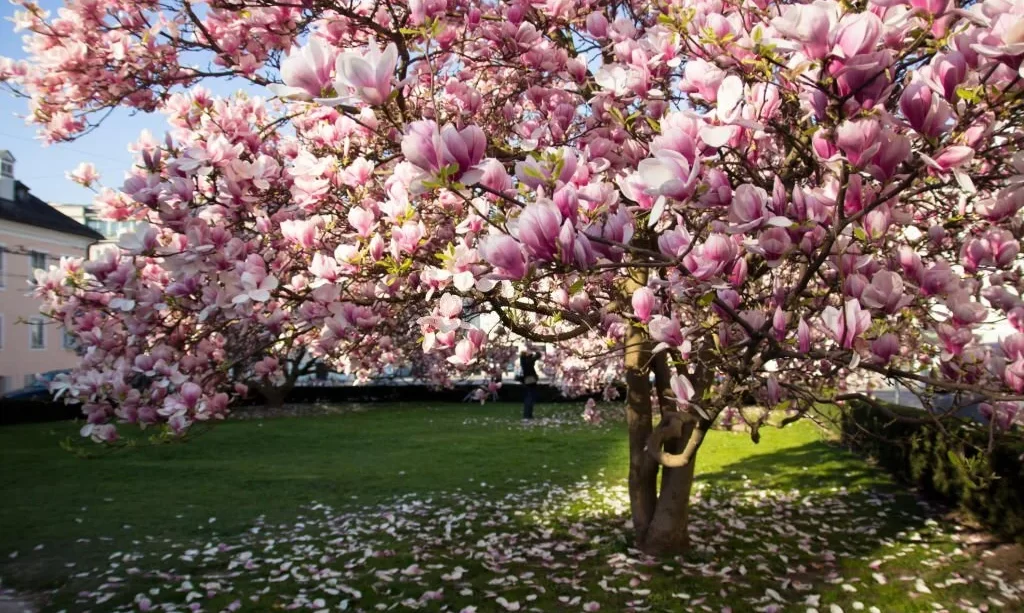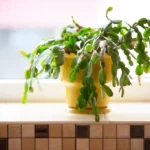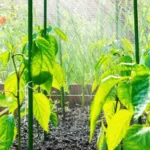Magnolia trees, with their exquisite blooms and timeless elegance, have earned a special place in the hearts of gardeners and nature enthusiasts alike. These stunning trees not only adorn landscapes with their captivating flowers but also hold cultural significance in many parts of the world. However, one question that often arises among those who admire these botanical wonders is, “How long do magnolia trees live?” In this article, we embark on a journey to uncover the secrets of the magnolia tree’s lifespan. Understanding the factors that influence their longevity can help us appreciate and care for these magnificent trees more effectively. Whether you have a magnolia gracing your garden or aspire to plant one, delving into the intricacies of their lifespan is a step toward becoming a better steward of these horticultural treasures.
Magnolia Tree Basics
To comprehend the lifespan of magnolia trees, it’s essential to begin with the basics:
- Botanical Characteristics: Magnolia trees belong to the Magnoliaceae family, and they encompass a diverse range of species and cultivars. One of their defining features is their striking, often fragrant flowers, which can be white, pink, purple, or even yellow. Magnolias typically have large, glossy leaves that add to their visual appeal.
- Common Species: Among the most well-known magnolia species are the Southern magnolia (Magnolia grandiflora), saucer magnolia (Magnolia × soulangeana), and star magnolia (Magnolia stellata). These species are celebrated for their distinctive characteristics and widespread popularity in landscaping.
- Ornamental Significance: Magnolia trees are cherished for their ornamental value, gracing gardens, parks, and landscapes with their vibrant blooms. Their elegant presence enhances the aesthetics of outdoor spaces and attracts admirers from early spring to late summer.
With these foundational insights, we embark on a journey to explore the lifespan of magnolia trees, unraveling the mysteries that dictate how long these botanical marvels endure in our natural surroundings.
Factors Influencing Magnolia Tree Lifespan
The lifespan of a magnolia tree is influenced by a multitude of factors, each playing a role in determining how long it will thrive:
- Environmental Conditions: The climate, soil quality, and local weather patterns have a profound impact on a magnolia’s longevity. Magnolias generally prefer well-drained, slightly acidic soil and thrive in temperate regions. Harsh winters, extreme heat, or prolonged drought can stress these trees and affect their lifespan.
- Species Variations: Different species and cultivars of magnolia trees have varying lifespans. Some magnolias are short-lived, while others can endure for several decades. Understanding the specific species you’re cultivating can provide insights into its expected longevity.
- Care and Maintenance: Proper care and maintenance practices significantly influence a magnolia tree’s lifespan. Adequate watering, regular fertilization, and appropriate pruning can promote healthy growth and extend its life. Neglecting these aspects may lead to a shorter lifespan.
- Southern magnolia is one of our most attractive native broad-leaved evergreen trees. There are few trees that can rival it as a specimen tree for larger landscapes, maturing to 50’ tall or more. With its thick and glossy green 6-8” leaves and large, fragrant white flowers up to 8” in diameter, southern magnolia attracts attention year round.
- The Magnolia Grandiflora grows best in full sun with acidic, well-drained soils. To enhance the beauty of southern magnolia, gardeners often allow this tree to branch to the ground. With the dense shade of evergreen leaves, few companions can grow in the shade of southern magnolia. It should be protected from very windy sites which can result in winter leaf burn.
- Southern Magnolia is a broadleaf evergreen tree with glossy green leaves and large, fragrant white flowers in summer. The deep green leaves are contrasted by copper colored undersides. Flowers are followed by attractive seedpods studded with bright red seeds for winter interest. A great choice for larger spaces.
- This evergreen magnolia is easy to grow. It flowers best when planted in full sun to light or open shade. It will thrive in a rich moist to well-drained soil, but will tolerate sand and clay if the drainage is adequate. Southern magnolia branches can break in the snow, although this cultivar is resistant to this. On young plants carefully brush off snow. If any limbs do break on the tree, prune out to provide a clean wound for quick and proper healing
- Large flowers, with a pleasing lemon fragrance, nestle among the glossy evergreen leaves in early to mid-summer. The foliage of this tree is not only shiny above, but there is a rusty-red fuzzy covering underneath which is very attractive.
Average Lifespan of Magnolia Trees
The average lifespan of magnolia trees can vary widely, primarily due to species differences and environmental conditions. While some magnolias are relatively short-lived, lasting around 20 to 25 years, others can thrive for much longer, spanning several decades or even a century under ideal circumstances. The Southern magnolia (Magnolia grandiflora), for example, is known for its longevity and can live for 80 years or more when properly cared for. On the other hand, saucer magnolias (Magnolia × soulangeana) are typically shorter-lived, with lifespans averaging around 20 to 30 years. It’s important to note that these are general guidelines, and individual trees may vary based on their specific growing conditions.
Prolonging Magnolia Tree Lifespan
Gardeners and arborists can take measures to prolong the lifespan of their magnolia trees:
- Proper Planting: Start with a healthy tree and plant it in an appropriate location with well-drained soil and adequate sunlight. Proper planting from the outset sets the stage for a longer life.
- Watering: Consistent and deep watering during dry periods is crucial, especially for newly planted magnolias. Mulching around the base of the tree helps retain moisture.
- Fertilization: Regularly fertilize your magnolia tree with a balanced, slow-release fertilizer to provide essential nutrients for growth and resilience.
- Pruning: Prune your magnolia tree as needed to remove dead or diseased branches, improve air circulation, and maintain its shape. Be mindful not to over-prune, as this can stress the tree.
- Pest and Disease Management: Monitor your magnolia for signs of pests or diseases and take prompt action if issues arise. Healthy trees are more likely to have longer lifespans.
By taking these steps and providing the care and attention that magnolia trees require, you can help ensure they live a long and healthy life, gracing your landscape with their beauty for years to come.
- Not Available for Sell in WA, USA
- A complete care package to maintain healthy and beautiful magnolia.
- Promotes root development and the long-term vitality of all types of magnolia.
- Includes Mycorrhizal Treatment, One Bag Premium Fertilizer (1.5 kg), and Biostimulant.
- Treats one large tree or 2-3 smaller or newly planted trees. Includes complete instructions.
Notable Long-Lived Magnolia Species
While magnolia species can vary in lifespan, some are notably long-lived, making them cherished additions to gardens over generations:
- Southern Magnolia (Magnolia grandiflora): This iconic magnolia species is renowned for its longevity. When well-cared for, Southern magnolias can live for 80 years or more. Their large, waxy leaves and fragrant, creamy-white blossoms contribute to their timeless appeal.
- Cucumber Tree (Magnolia acuminata): Known for its resilience, the cucumber tree can live for several decades or even up to a century. Its green, cucumber-like fruits give the species its name, and its yellow blooms add beauty to woodlands.
- Saucer Magnolia (Magnolia × soulangeana): While saucer magnolias tend to have a shorter lifespan compared to some other species, they can still live for around 20 to 30 years when properly maintained. Their early spring blooms, with large, cup-shaped flowers, are a cherished sight in gardens.
Challenges and Considerations
Magnolia trees, like all living organisms, face challenges and considerations that can impact their longevity:
- Diseases: Magnolias can be susceptible to diseases such as powdery mildew, leaf spot, and canker diseases. Regular inspections and prompt treatment are essential to mitigate disease-related threats.
- Pests: Pests like scale insects, aphids, and magnolia scale can harm magnolia trees. Integrated pest management techniques can help safeguard these trees from infestations.
- Environmental Stress: Harsh environmental conditions, including extreme heat, prolonged drought, or severe cold snaps, can stress magnolias and reduce their lifespan. Providing protection during harsh weather events can make a significant difference.
- Soil Quality: Poor soil quality or improper planting can hinder a magnolia’s ability to thrive. Soil testing and appropriate amendments can improve soil conditions and support the tree’s health.
Conclusion
The lifespan of magnolia trees is a subject of fascination and intrigue for gardeners and nature enthusiasts alike. These remarkable trees, with their diverse species and timeless beauty, grace landscapes with their presence. While the average lifespan of a magnolia tree varies depending on factors like species and care, one thing is clear: by understanding the unique needs of these trees and providing them with the attention they deserve, you can extend their lives and continue to enjoy their beauty for many years.
As you tend to your magnolia trees, remember the importance of proper care, disease and pest management, and environmental considerations. By nurturing these arboreal wonders, you contribute to their longevity and ensure that future generations can delight in the splendor of magnolia blooms and the enduring allure of these botanical treasures.






